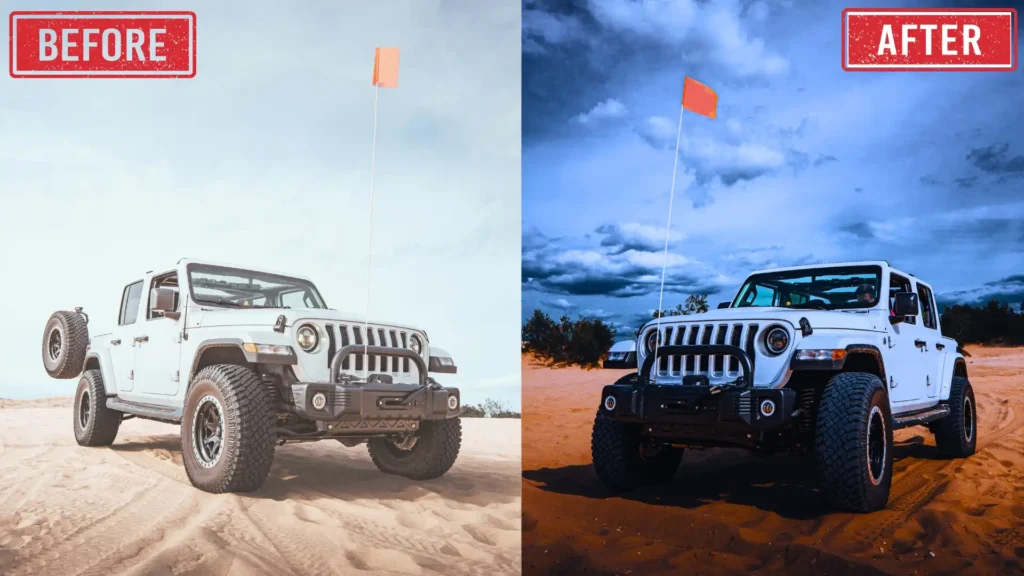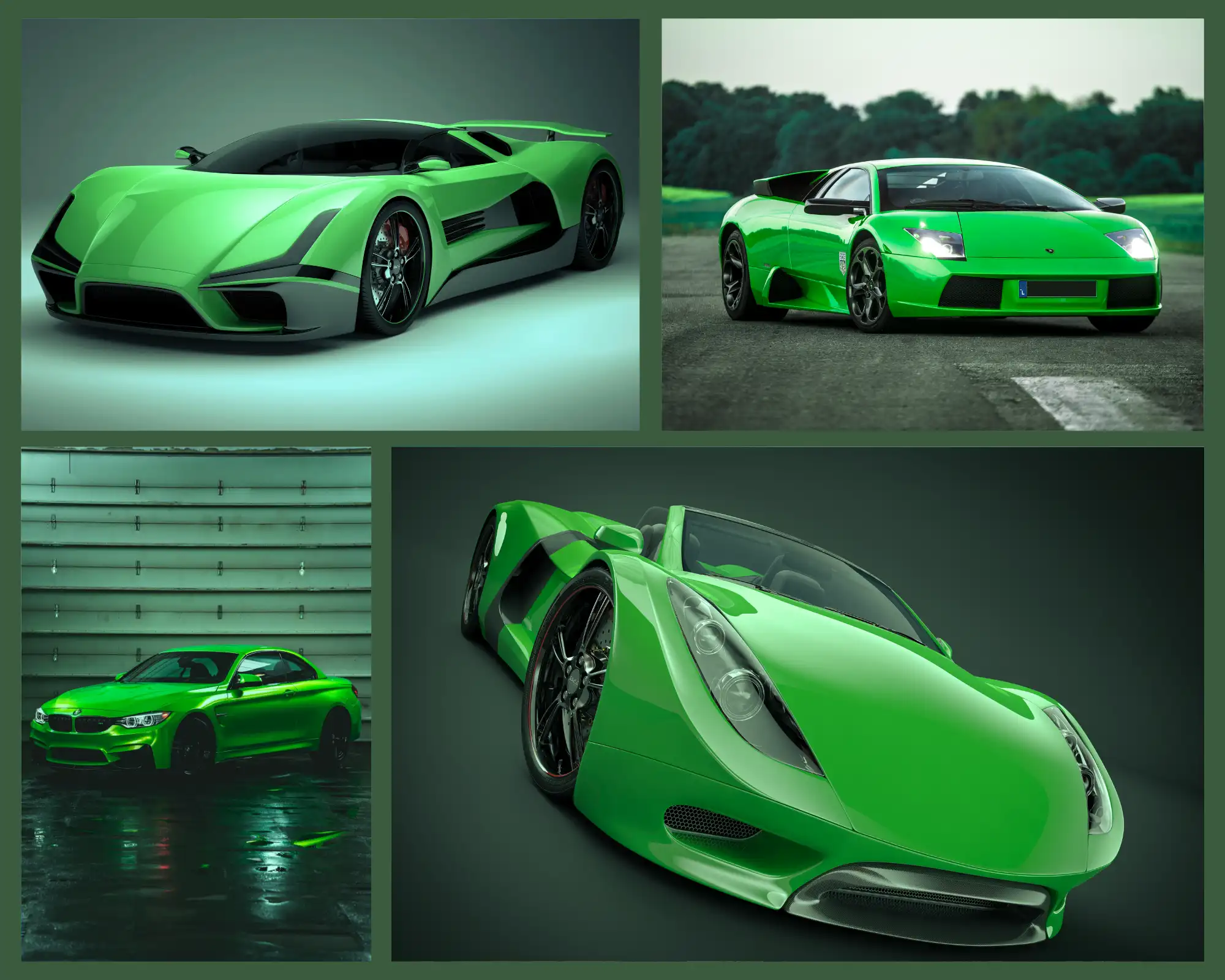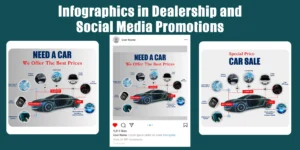In the competitive automotive market, visual content is king. According to a study by MDG Advertising, content featuring relevant images garners 94% more views than content without. This statistic underscores the power of high-quality photography in shaping customer perception and driving sales. High-quality photography not only captures attention but also conveys a vehicle’s unique attributes, making it a crucial element in automotive marketing.
Table of Contents
Toggle1. Importance of Visual Content in Marketing
Visual content plays a pivotal role in modern marketing strategies. Consumers are increasingly drawn to visually appealing content, especially on platforms like Instagram, Pinterest, and TikTok.

- General Importance: Visual content is more engaging and easier to process than text. According to HubSpot, visual content is 40 times more likely to get shared on social media.
- Specific to Automotive Industry: For the automotive sector, high-quality images are essential. Cars are high-involvement purchases, and detailed visuals help potential buyers explore features and visualize ownership.
2. Professional Photography vs. Amateur Photography
The difference between professional and amateur photography can significantly affect consumer perception and sales.
- Quality Difference: Professional photographers use high-resolution cameras, specialized lenses, and advanced lighting techniques. They possess composition and post-processing skills, ensuring that the vehicle is presented in the best possible light.
- Equipment: Professional gear like DSLR cameras, lighting kits, and editing software.
- Skills: Expertise in capturing the best angles, using natural and artificial lighting, and post-processing to enhance images.
- Impact on Perception: High-quality photography enhances the perceived value of the car.
- Trust: Professional photos build credibility and trust. According to a study by VHT Studios, listings with professional images can sell 32% faster than those with amateur photos.
- Detail: High-quality images capture intricate information, showcasing the car’s features and craftsmanship.
3. Enhancing Customer Experience
High-quality photography significantly improves the customer experience by making online browsing more engaging and informative.

- Engagement: Attractive visuals are more likely to be shared and liked on social media, increasing engagement and reach.
- User Interaction: Interactive elements like 360-degree views and virtual tours enhance the online shopping experience.
- Emotional Connection: High-quality photos create an emotional bond with the product, fostering a desire to own the vehicle.
- Virtual Showroom: Professional photography can create a virtual showroom experience.
- 360-degree Views: Allow customers to explore the car from all angles.Detailed Shots: High-resolution images of interiors and exteriors help buyers make informed decisions.
4. Influence on Sales
The quality of visual content directly impacts sales by affecting first impressions and conversion rates.

- First Impressions: High-quality photos make a strong first impression, which is crucial in the automotive industry.
- Conversion Rates: Listings with professional photos have higher conversion rates. According to a study by CarGurus, listings with high-quality images receive 50% more clicks than those without.
- Decision Making: Detailed and attractive visuals help consumers make more informed purchasing decisions.
- Case Studies:Tesla: Tesla’s use of high-quality, professional photography on its website and social media channels significantly contributes to its strong brand identity and impressive sales figures.
- BMW: BMW’s marketing campaigns often feature high-quality images that highlight the luxury and performance of their vehicles, boosting consumer interest and sales.
5. Branding and Storytelling
High-quality photography is a powerful tool for building brand identity and telling a brand’s story.

- Brand Identity: Consistent, high-quality visuals reinforce the brand’s identity.
- Visual Storytelling: Professional photos can tell a story about the brand’s values and the lifestyle associated with its vehicles.
- Emotional Resonance: Engaging visuals connect with customers on an emotional level, fostering brand loyalty.
- Campaign Integration: Integrating high-quality photography into broader marketing campaigns ensures visual consistency across all platforms.
- Cross-channel Consistency: Maintaining consistent visual branding across print, online, and social media.
6. Technical Aspects of Automotive Photography
Capturing high-quality images of vehicles involves specific technical considerations.
- Photography Techniques: Key techniques in automotive photography include lighting, angles, and composition.
- Lighting: Use of natural and studio lighting to highlight the car’s features.
- Angles and Composition: Selecting the best angles to showcase different aspects of the vehicle.
- Post-Production: Enhancing images through photo editing Software: Tools like Adobe Photoshop and Lightroom are essential for professional photography post-production.
Techniques:

- Retouching: Removing blemishes and enhancing the overall look of the car.
- Color Correction: Adjusting colors to make the images more vibrant and accurate.
- Detail Enhancement: Sharpening details to ensure every aspect of the car is clear and attractive.
7. Challenges and Solutions
Automotive photography comes with unique challenges that require professional solutions.
- Common Challenges: Issues like reflections, lighting conditions, and capturing interiors.
- Professional Solutions: Techniques and equipment used by professionals to overcome these challenges.
- Equipment: Use of polarizing filters and HDR techniques.
- Techniques: Managing reflections and balancing lighting.
8. Future Trends
The future of automotive photography is being shaped by technological advancements.

- Emerging Trends:Drones: Capturing dynamic aerial shots
- 3D Photography and AR: Providing immersive experiences.
- Technological Advancements: Innovations in camera technology are enhancing the quality and capabilities of automotive.
- AI and Machine Learning: Automated editing and enhancement.
- VR: Virtual reality experiences for immersive car showcases.
Conclusion
High-quality photography is indispensable in automotive marketing, significantly impacting sales and customer perception. By investing in professional photography, automotive brands can enhance their visual content, create stronger emotional connections with customers, and drive higher sales. As technology continues to evolve, the integration of advanced photographic techniques will further elevate the effectiveness of automotive marketing strategies.
References
- MDG Advertising. The Power of Visual Content in Digital Marketing. MDG Advertising.
- HubSpot. The Importance of Visual Content. HubSpot.
- VHT Studios. Impact of Professional Photography on Real Estate Sales. VHT Studios.
- CarGurus. The Role of High-Quality Images in Car Listings. CarGurus.
- Tesla. Tesla’s Marketing Strategy. Tesla.
- BMW. BMW Marketing Campaigns. BMW.










